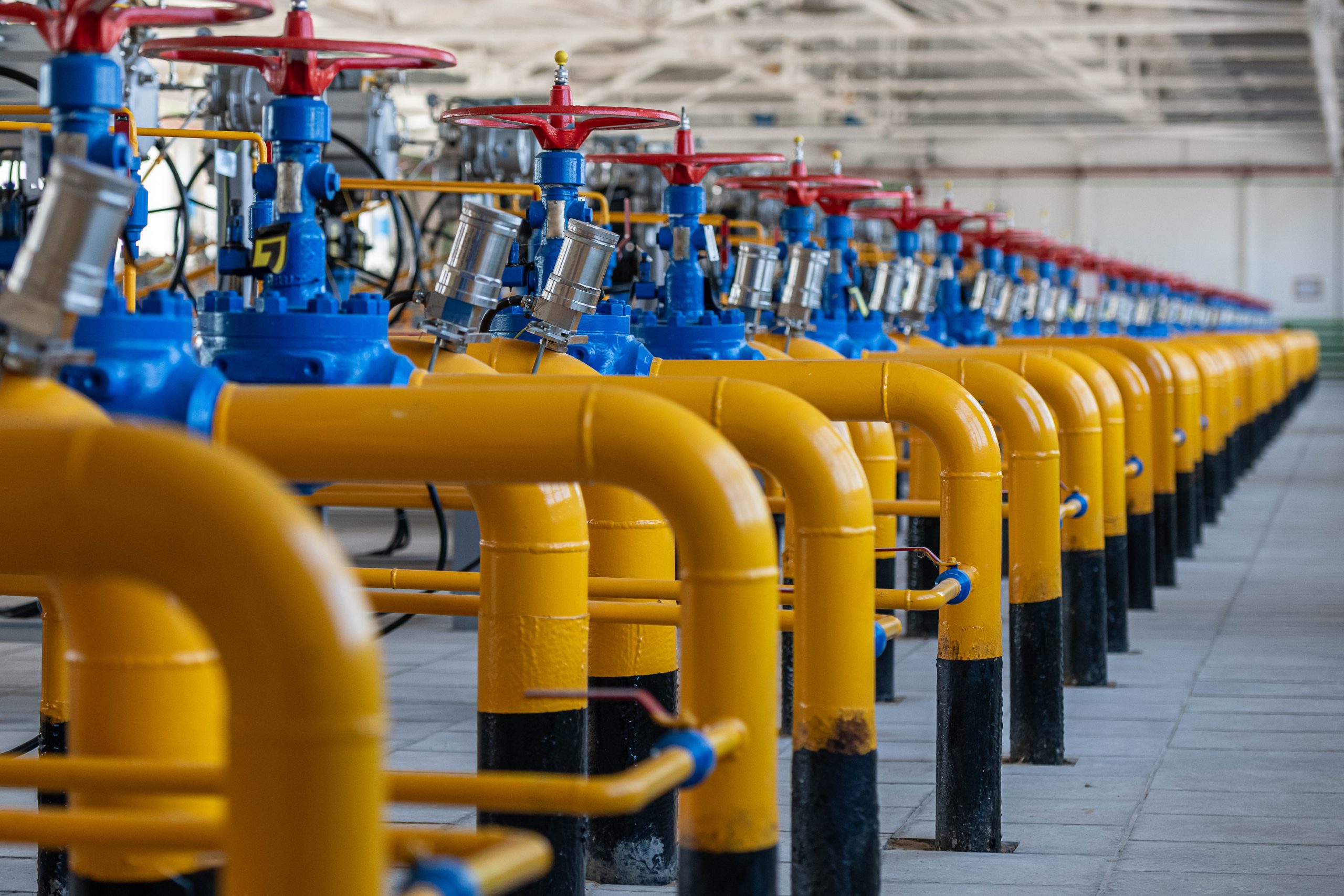A Message From Industry: What to Expect in 2024

As the industry enters 2024, coined as a critical year across the value chain, Hydrogen Industry Leaders reached out to those on the front line of growing the economy across production, storage and distribution for their outlook on 2024.
Suppliers to the sector have often felt the sharp end of growing the hydrogen economy. Establishing off-takers and a concrete supply chain is by far the hardest aspect for developments in the field.
Despite this, Anders Johansson, Vice President, Heavy-Duty OEM at Westport Fuel Systems, a global supplier of advanced fuel delivery components and systems, said: “Industry and political stakeholders are slowly acknowledging the importance of hydrogen in meeting the UK’s net zero goals.
“In addition, hydrogen fuel systems have proved to be especially efficient for larger vehicles, namely those in the commercial transportation sector such as HGVs and buses.
Positivity practically beaming from some in the sector
This positivity is being echoed from a fuel cell perspective, with Greg Harris, Chief Commercial Officer at Intelligent Energy, telling Hydrogen Industry Leaders: “At Intelligent Energy, we doubled our sales of hydrogen fuel cell units in 2023 and customers’ forecasts tell us demand for products will accelerate even further during 2024.”
From this it can be assumed that momentum is definitely building in the sector as industry realises batteries alone cannot meet zero emissions or net zero targets.
“We expect demand for fuel cells will continue to be greatest where hydrogen subsidies are highest and the fuel is available at a reasonable cost.”
From an intellectual property perspective Reddie and Grose have seen significant progress in green hydrogen production, and expect to see this continue into 2024.
Olivia Buckingham, Technical Assistant at Reddie & Grose explained: “One company leading the way in the development of innovation in green hydrogen production is Siemens Gamesa, who began their pilot project connecting a wind turbine to an electrolyser in 2021.”
Continuing Olivia commented: “As with many successful innovators, Siemens Gamesa’s early-stage innovation is underpinned by patent applications, which puts the company in a strong position to reap commercial reward from their technology when it comes to market.”
Patents will be an important tool in driving forward the innovation that is needed to meet climate change and energy security goals, providing a commercial reward in return for investment in the development of new technology.
Some Companies across production more guarded about 2024
Despite this optimistic messaging coming from all angles in the hydrogen sector, in which there is plenty, there are also some pressure points that need massaging during 2024 and beyond.
Kelly Cole, General Manager for Electric Power at Finning UK & Ireland voiced: “The primary hurdle lies in creating low-carbon energy solutions that are not only environmentally friendly but also financially sound and technically robust.”
When it comes to microgrids and decentralised systems, adopted systems must be scalable and flexible while suppliers must offer comprehensive operational support. It’s also crucial to balance CAPEX and OPEX costs when making this transition.
“At Finning UK & Ireland, all our gas generators can handle a 25% hydrogen blend, and we even have a demonstrator running on 100% hydrogen.”
Still a long way to go from a policy and regulation perspective
Resonating with these sentiments, Christophe Bianchi, Chief Technologist, Office of the CTO at Ansys added: “The energy industry must respond simultaneously to a dual challenge: that of decarbonisation, on which the future of the planet depends, and that of competitiveness, on which the survival of any company depends.
“However, the current economic climate is not conducive to taking risks. To cover needs and electrify entire sectors of industry: “We need to improve the efficiency of existing solutions on the one hand, and deploy technologies that are not yet operational on the other.”
Ricardo have also measured optimism and cautiousness heading into 2024, with Dr Hamish Nichol, Head of Hydrogen stating: “Ricardo predicts that going into 2024, public and private sector organisations working across the hydrogen value chain will still not be prepared for the Carbon Border Adjustment Mechanism (CBAM).”
The EU’s recently introduced carbon pricing system will impose a fee on a range of carbon-intensive goods imported into the EU from sectors with the highest risk of carbon leakage: cement, iron and steel, aluminium, fertilisers, electricity, and hydrogen.
For EU nations the decision to ‘make’ versus ‘buy’ for green hydrogen will be strongly influenced by the CBAM, yet with very different carbon intensity requirements for ‘low-carbon hydrogen’ around the world could this make the EU a less favourable target market over other regions?
The first phase of CBAM is in effect until the end of 2025
The first phase of CBAM is in effect until the end of 2025 and requires only monitoring and reporting of the embedded emissions for goods imported into the EU, while the second phase starting in 2026 will require importers to pay for the embedded emissions of their imports.
“With the first quarterly reports due for submission by the end of January 2024, businesses cannot afford to delay. With just two years until the financial impact of CABM really hits, does this give extra impetus for investment in these sectors within the EU rather than reliance on imports?.
Rounding up, Dr Nichol implored: “It would great to see the EU becoming a world leader in green steel, green fertiliser and green cement, making tangible steps towards our net zero aspirations, and in so boosting the hydrogen market.”
With the UK Government seemingly interested in growing both blue and green hydrogen production, Mona Bhagat, Business Development Director – Energy Transition at KBR Consulting International said: “Hydrogen and carbon capture and storage (CCS) technologies will play a critical role in mitigating climate change in 2024 and beyond.
“However, for energy companies venturing into hydrogen and CCS, there are several challenges. The primary one being the need for technological refinement to enhance efficiency and safety.
Paul Willacy, managing director of waste-to-hydrogen firm Compact Syngas Solutions, said: “The hydrogen industry is going to step out of the shadows and into the limelight in 2024 as it becomes an increasingly vital part of the drive to hit net zero.
“Hydrogen will become an essential fuel for transport, with fuel cell electric vehicles growing their market share, and hydrogen cementing its place as a viable alternative to fossil fuels for HGVs, trains, ships and even planes.
National infrastructure in the UK is still a long way behind where it needs to be, however, and we see local production being an important stepping stone to get to a hydrogen future.
From an Xoserve perspective: “2024, we can only hope, will be the year of action enabling the energy industry to take substantial steps towards achieving net zero emissions and decarbonising heat.”
The Future System Operator is expected to begin operations in June to establish a solid plan for the deployment of hydrogen. In the meantime, the gas industry will be readying itself in preparation for a decision from the Government on the potential regulatory and commercial frameworks needed to support a future hydrogen economy.
CEO and Founder of Hydrogen Safe, Andy Lord, commented: “The green energy sector shows absolutely no signs of slowing, yet we fail to equip our workforce with the skills that they need to work confidently and safely with hydrogen. If we are to benefit from the opportunities that the move towards achieving net zero presents, we must all take responsibility for putting the correct infrastructure in place.”

